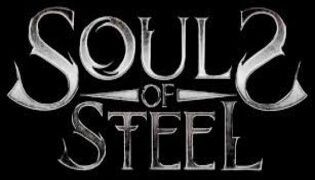When it comes to project management, the Trello review and Jira review both have their merits. However, their functionality may vary depending on the task at hand and the organization. That is why we will focus on Trello in this comparison. Jira is more complex and is designed for fostering developer collaboration, while the Trello review focuses on keeping your projects simple. If you’re looking for a project management tool for your team, both tools are an excellent choice.
Jira has several tiers for its pricing. Jira’s free tier is limited to 10 users, whereas Trello’s Business Class plan allows unlimited users. The free plan also has a limit on storage, but this is more than offset by Jira’s unlimited user plan. Jira’s premium tier offers a full-featured solution for a much higher price.
Advantages and Disadvantages
Both Trello and Jira have their advantages and disadvantages. The free tier is great for small teams, and users do not have to pay for it. Jira, on the other hand, can handle large teams better than Trello. But if you’re just starting out, Trello might be the right choice for you. But which one should you choose? Here are a few things to keep in mind.
Trello enables collaboration with teammates. Trello also supports a private board option. It also takes into account people’s work schedules and offers an eye-catching visual approach to project progress. It also offers a free version and a private board sharing option. Jira, on the other hand, is an agile project management platform developed by Atlassian. Jira allows teams to manage work by collaborating and coordinating their tasks.
There are many reasons to choose Jira Work Management over Trello. One major reason is the ease of use. Both programs are user-friendly, and both have integrations that make them even more useful. But which one is best for your company? Read on to learn the pros and cons of each tool and make an informed decision. It’s also helpful to know how each product compares with Jira.
Differences between Jira Work Management and Trello
In this article, we’ll compare the key differences between Jira Work Management and Trello, two popular project management software programs. Both software programs offer the same functionality, but each is suited to a different kind of project. While both offer similar features, Jira is more customizable, while Trello is more limited. We’ll also compare their respective hosting options. While Jira review is available as a cloud-based service, Trello is only available in a server-based environment.
Each tool has different pricing options. Jira has a free plan, which is limited to 10 users. Trello has no such limit, but Jira requires a premium plan to access its full functionality. Regardless of the plan you choose, Trello and Jira both offer free trials and trial accounts. While Jira’s Free tier is limited to 10 users, Trello’s Premium plan includes unlimited storage. Jira is also easier to use and has more robust features, but it’s not cheap.
While Jira has more features and is a robust software package, Trello has a more flexible and intuitive interface. Trello is more general purpose and geared toward smaller teams while Jira is designed to cater to larger teams with more advanced needs. However, both software tools are great for managing remote teams. You should be aware of these differences before choosing between the two software packages. While Jira has a greater depth of advanced features, Trello’s simplicity is also its primary selling point.
Integrations between Jira and Trello
The Integrations between Jira and Trello allow teams to collaborate seamlessly, sharing a single view of issues and projects. The two applications also sync board and card content, including comments, custom fields, assignees, and more. Unito is a free tool that connects Trello and Jira, enabling teams to work in their favorite software while protecting data from unauthorized access. Unito offers dozens of integrations and supports both monthly and one-time sync.
Once you’ve created your Jira project, import the users of your Trello board. You’ll receive an invitation to join. You can’t configure the Jira connection the conventional way. To do this, navigate to the Power-ups page and look for a “Jira Query ID” and “Jira Filter ID”.
If you have a team of programmers or marketing professionals working together on a project, Trello can help you manage the entire process. For example, you can assign cards to certain users, so they can see what tasks need to be completed and when. If a Jira issue requires your assistance, Trello can be a help desk portal for your entire company. And when the issues are fixed, your IT support agents can simply update the Jira issue and assign it to a new one.
Comparison of Jira vs. Trello
There are many features that set Jira apart from Trello. Jira’s tagging and collaboration capabilities are unmatched, and it’s easy to see why it is so popular among project managers. Both Trello and Jira allow you to organize, manage, and share projects with others. Both have flexible features, so they can work with other dependent applications. However, if you’re looking for something a bit more customized, Trello may be better for you.
Jira is more complex, allowing for more complex tracking systems and additional board types. Jira is an excellent choice for scrum and agile processes, while Trello is more suited for general-purpose projects. Depending on your needs, both solutions can support large teams and small ones. You can use both for your project, and both can support virtually unlimited users. Jira’s ease of use may be less appealing than Trello’s features, but if you’re looking for a basic software system for managing projects, Trello is a good choice.
Jira offers a larger number of add-on software options. While most organizations won’t use most of them, Jira has an advantage in numbers. Trello, on the other hand, is easy to use and allows users to add kanban boards and other tools to their workflow. And if you want to be creative, there’s a Trello board for you!























![To Increase YouTube Subscribers Must Use These Service Provider [New]](https://businessleed.com/wp-content/uploads/2022/11/To-Increase-YouTube-Subscribers-Must-Use-These-Service-Provider-New-360x180.jpg)














